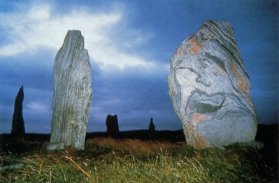 Rampant Scotland Book Review
Rampant Scotland Book Review
Land Lines
 Rampant Scotland Book Review
Rampant Scotland Book Review
Land Lines
An illustrated journey through the landscape and literature of Scotland, written by Moira Burgess with specially commissioned photographs by Marius Alexander and Paul Basu.

Introduction
"Attempts to capture the spirit of a place in a definition are rarely fortunate. It is wiser to point to its literature as the embodiment of a thousand subtle and vagrant traditions".
John BuchanLand Lines is a beautifully illustrated new book offering the reader the ultimate literary tour of Scotland. Culture, language and dialect shape a nation and the time is now ripe in Scotland to promote and celebrate our rich literary history. This book is for Scots everywhere, visitors passing through and for all who appreciate great Scottish writing, captured with the beauty of the land that has inspired it.
Take a journey, real or imaginary from the comfort of your armchair. Through quiet glens, over barren moors and hills, along lochside, seashore and city streets. On the way, indulge in the company of a host of Scottish writers across a rich diversity of language and dialect, century by century from Allan Ramsay to Ian Rankin, Robert Louis Stevenson to Muriel Spark, McGonagall to MacNeacail, James Hogg to Irvine Welsh.
Land Lines is an inspiring and imaginative journey across a panoramic sweep of the Scottish landscape. Travel through time and place, memory and emotion, as expressed through the personal vision of our writers and poets. The story of the changing image and shape of Scotland, rural communities and cityscape, is captured by the specially commissioned photographs by Marius Alexander and Paul Basu. Their vision is underpinned by the illuminating narration of Moira Burgess who in a seamless and unobtrusive way, blends stories and verse, fact and fiction to create a perceptive and fresh insight into the nature of a land and its people.
From the first few pages of Chapter One, you are guided on a magical and atmospheric walk. Immediately the reader feels a sense of the raw, open landscape, "cauld is the snaw wind" chilling to the bone. Stand still and breathe in the "sweet air" of the windy hilltops or dream of distant "misty blue islands" lost at sea. Turn the pages and travel east from rural retreat to cityscape; glimpse the "stane-grey" granite of Aberdeen, take the road south, drift back in time and imagine the "grimy tenements" and "the lums of the reikan toun" of historic old Edinburgh. Go west to see the brash-new "concrete, glass and steel" design of cool, contemporary Glasgow.
Introduction by Moira Burgess
The Spirit of a Place is everywhere in Scotland. The viewpoint of Bermersyde in the Borders known as Scott's View for instance is a truly haunted place. It's a fine view in any case, over the fields and woods and the winding River Tweed to the strange, unexpected Eildon Hills, but there's an extra dimension if you know two things. Just here Sir Walter Scott, out riding, was accustomed to stop here and look at his favourite view. After his death, as his funeral procession passed this way, his own horse drawing the hearse, paused for some minutes - out of habit? out of respect for his master? - at this very spot.
The interaction between landscape and writers - sometimes called "literary topography" and sometimes packaged in a phrase like "the Burns Country", is what we are presenting in Land Lines. This is not a history or a survey of Scottish literature, so there are famous names which you won't find as well as less famous ones which you will. There are the romantic poets of the 18th and 19th century who were so impressed by the mountains and lochs; the kailyard novelists of the late 19th century who clung to rural and village life; the realistic novelists of the 20th century whose concern was for industrial Scotland; and the current flowering of young poets, novelists and dramatists who look at Scotland with new eyes.
The landscape of Scotland can mean several things, sometimes more than one at the same time. There's the natural landscape, the mountains and lochs, the islands in the encompassing sea. There's the human landscape which has grown up as people learned how to stay alive and how to live together, settling beside rivers, building houses and farms, ploughing the land, mining for coal and gold. Neil Gunn entitled his last and most metaphysical novel, The Other Landscape, and writers have recognised this invisible, spiritual landscape, as well as the natural and human elements, as a source and an enrichment of their work.
Scotland is not just a beautiful place, but a landscape of the mind.
Next page > The Photographer > Page 1, 2, 3, 4.
Go to Amazon.co.uk to order Land Lines.
Return to Bookstore.
Where else would you like to go in Scotland?

